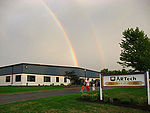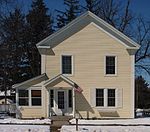Professional Risk Managers' International Association
Business and finance professional associationsInternational professional associationsNon-profit organizations based in MinnesotaNorthfield, MinnesotaOrganizations established in 2002 ... and 1 more
Risk management in business
The Professional Risk Managers' International Association (PRMIA) is a non-profit, member-driven professional organization that focuses on the development and education of the risk management profession. Its membership provides a network of risk professionals working to set standards for the global risk profession. PRMIA offers the Professional Risk Manager designation and several other certificate programs for professional certification purposes.
Excerpt from the Wikipedia article Professional Risk Managers' International Association (License: CC BY-SA 3.0, Authors).Professional Risk Managers' International Association
Riverview Drive,
Geographical coordinates (GPS) Address Nearby Places Show on map
Geographical coordinates (GPS)
| Latitude | Longitude |
|---|---|
| N 44.440152777778 ° | E -93.186666666667 ° |
Address
Riverview Drive
55057
Minnesota, United States
Open on Google Maps







